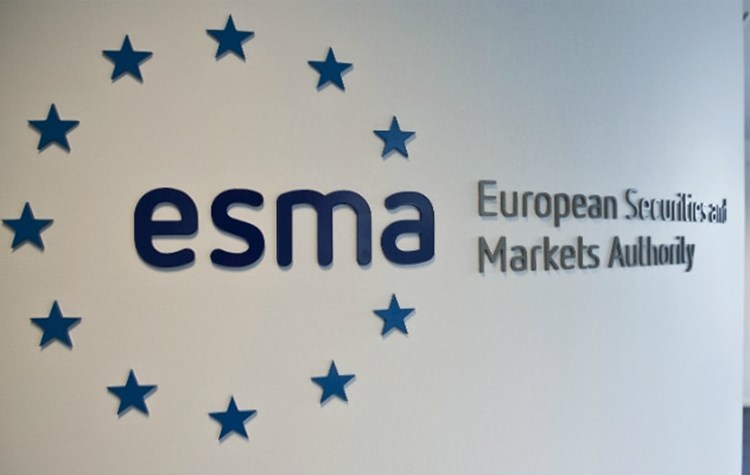Autor: Beatriz Alonso-Majagranzas
I. Purpose and content of the consultation paper
ESMA is conducting a consultation on certain aspects of the short selling Regulation1 open until 19 November 2021. The consultation undertakes a review of the provisions of regulation after the experience gained from the measures adopted by the relevant competent authorities (RCA) during the COVID-19 crisis, consisting both of short and long term bans.
ESMA aims at facilitating the operation of the SSR in any future emergency circumstances and also at the light of the episodes of high volatility which took place mainly in the US markets in respect of the so called “meme stocks”.
We analyze and comment what we find the most relevant matters and questions raised within the Consultation Paper, following the order of the sections of the document.
II. Main proposals of the consultation paper
Section 3. Emergency measures adopted under SSR
Section 3.1 Long term bans: empirical analysis on the impact of the bans adopted after the COVID-19 outbreak
Main ESMA conclusions are that European long-term bans of 2020 had mixed effects, since they entailed a deterioration of market liquidity but also diminished the volatility of the concerned shares. ESMA supports that the restrictions on acquiring and increasing NSPs, together with their indicated impact on volatility can contribute to preventing that increasing NSPs exacerbate disorderly downward price spirals.
As indicated by ESMA, consistent with prior theoretical and empirical work, the short selling bans imposed during the crisis are associated with a liquidity deterioration. It is crucial to take into consideration this fundamental element of market quality as it shows that, during the ban period, the instruments subject to it have been transacted at a higher cost and thus have been less efficient precisely in times where liquidity is of the highest relevance to allow market participants to enter or exit the market in the best conditions. This is even more relevant when the short selling ban is not applied in all jurisdictions as it has been the case during the COVID-19 crisis.
Short selling is an element of the ecosystem of the stock market, that are complex, but widely recognized as one of the most efficient markets that exist, especially when the degree of liquidity is high. The existence of short selling and therefore bearish investors makes the markets more efficient, with greater and faster adjustment capacity. During the pandemic, markets have functioned normally, adequately absorbing liquidity and making use of volatility management mechanisms, allowing the orderly functioning of the market.
According to Canalejas Merín2, any regulation on this matter must address the problem from an economic perspective, having in mind the important function that short selling plays in the price formation and adding that it is not used only in a purely speculative way, but used as well as a hedging strategy or risk management and as a legitimate mechanism by market makers.
It is as well mentioned that short selling can prevent stock prices from reflecting only the opinion of the most optimistic investors and prevent the creation of financial bubbles. Similarly, economic research and empirical studies suggest that short sellers can help uncover the price and convey beneficial information to market operators. In efficient markets, negative information should have an effect on prices and some studies suggest that the contribution of short selling to market efficiency is greater than that of investment analysts and could even prevent abrupt corrections in marketable securities price premiums.
After the short selling ban in Spain, the IBEX 35® index reached a spread of 25 basis points on March 13. During the months of March, April and May, in which the ban was in force, the index spread stood at 14.90; 10.20 and 8.46 basis points respectively. The average for the months of January and February stood at 5 basis points.
The measure does not only affect the cash markets but also the derivatives markets, which trade products that allow to graduate the risk of investment portfolios. Only a portion of short positions reflect purely directional strategies (that prices will fall). More common is even hedging portfolios or positions in derivatives,
In Spain, as a result of the ban on short selling between March 17 and May 17, 2020, the total volume traded in the MEFF derivative products market during the second quarter of 2020 decreased by 27.1%, compared to the same period in 2019.
Section 3.5 Long-term bans: scope of the measure in relation to indices, baskets of instruments and ETFs
ESMA considers either to exclude indices, baskets and ETFs from the scope of the long-term bans or, alternatively, to introduce a percentage-based weighting approach where they would be excluded only when the banned instruments do not exceed a percentage of the overall components.
Taking into account the above comments on the impact of the bans adopted on market quality, the measures should be extended to indices, baskets and ETFs.
The type, number and liquidity of the instruments affected by the short selling ban at a given time must also be taken into account to assess the impact of extending the measure to those instruments according to their global or sectorial nature, their assets under management (as a measure of their size) and their own liquidity.
Having in mind the above aspects and to the extent that short positions in those instruments might imply a circumvention of the measures taken in their respective underlying basket, a percentage-based weighting approach could limit this effect. This measure would as well objectivize and clarify that, in any case, the use of the indices, baskets and ETF´s would not make possible the circumvention of the ban.
Section 4. Review of SSR regarding the requirements for the calculation of NSPs, the “locate” rule and the list of exempted shares
Section 4.1 Calculation of NSPs in shares: subscription rights
ESMA proposal to include subscription rights in the calculation of NSPs seems adequate but taking into account that these are short-life instruments and present specific profiles in comparison to other instruments (i.e., it may be difficult to locate and loan.)
As a reference, the economic effect of the subscription rights is the same as to call options which are included in the calculation.
Section 4.2.3 Weakness of the third party´s commitment under Article 12 (1) (c) SSR
It seems that if no measures to reinforce the wording and to establish a firm commitment are taken, it could eventually lead to a loss of control of the short positions that might bring uncertainty in case of sudden and extreme change of the market conditions.
The locate should permit a generic commitment that identifies, stock by stock, its availability at the end of the sale trade date, as it happens in some EU markets.
It is of utmost importance, that the rules are harmonized all over the EU in order to give the guarantee of the level playing field among intermediaries.
According to that, keeping the three types of locate arrangements seems to be the most appropriate as it may probably give more flexibility to the industry and their current set-ups and processes but accompanied by the measure of increasing the level of commitment of the third party for all types of arrangements.
Section 4.2.5 Lack of harmonised sanctions for “naked short selling”
ESMA gives details about the diversity of the sanctions that can be imposed to natural and legal persons as well as a big dispersion between the average and the median sanctions and supports to harmonise them.
In this sense, it is necessary to harmonize the sanctions in order to foster their deterrent effect and similar application across the EU.
Section 4.3 List of exempted shares
ESMA is considering whether RCAs should have the capacity to maintain within the scope of the SSR obligations, shares for which a significant percentage of trading takes place within the EU.
The application of these measures related to the impact on the real economy that the trading of a share in several jurisdictions could entail, should be addressed through cooperation between the NCAs of those jurisdictions in order to avoid duplication in the application of measures and possible extraterritoriality. More relevant to assess the possible impact on real economy should be the relative importance of the volume traded for the aforementioned share in the markets involved as a whole in order to adequately measure the risk that it could entail.
It should also be taken into account that trading a security on a particular trading venue might not have been requested by the issuer, so that the application of those measures could have an impact on the evolution of the company without the company being aware of that possibility.
The SSR should apply to those shares that have its primary listing within the EU.
[1] Consultation Paper ESMA70-156-3914 “Review of certain aspects of the Short Selling Regulation”, dated on the 21 September 2021, in the consultation open until 19 November 2021.
[2] “La normativa sobre ventas en corto y credit default swaps” by Jose Francisco Canalejas Merín, published in “Revista del Derecho del Mercado de Valores”n.º 25/2019, Nº 25, 1 de julio de 2019.
Autor: Beatriz Alonso-Majagranzas e Ignacio Olivares






